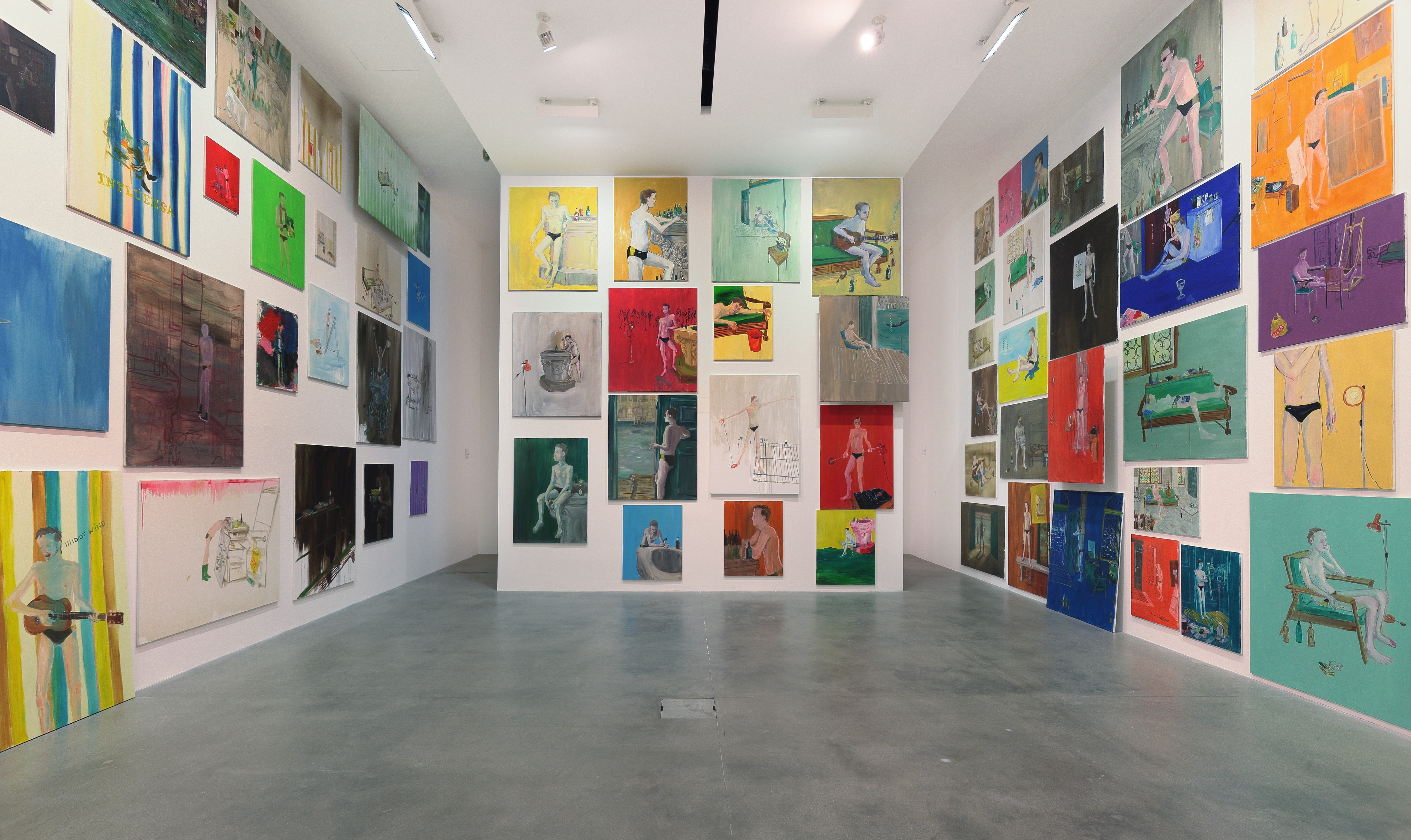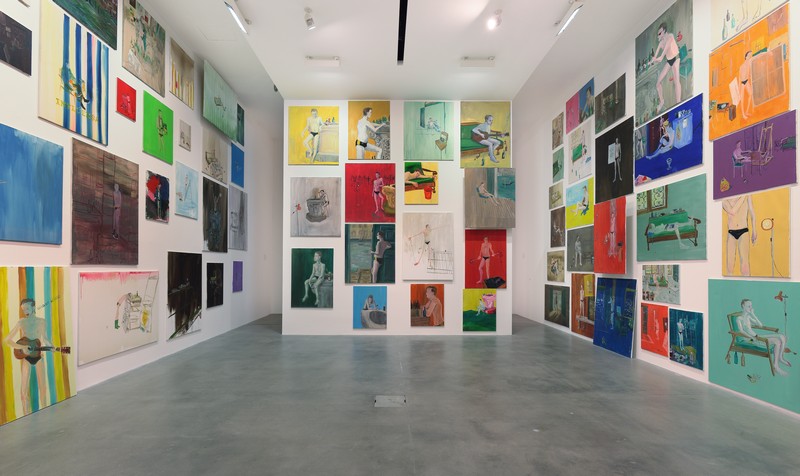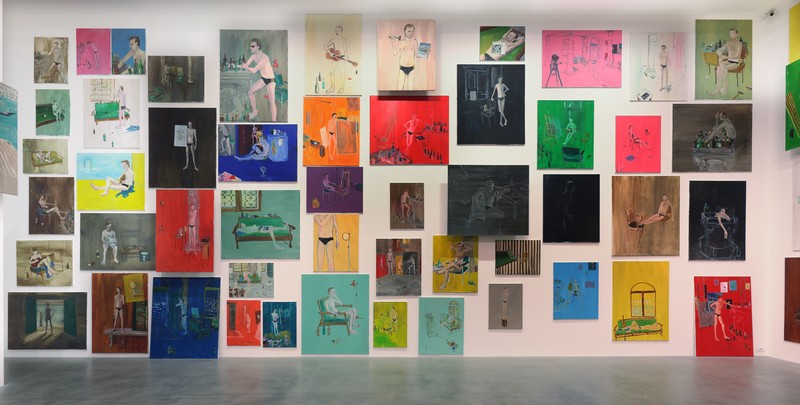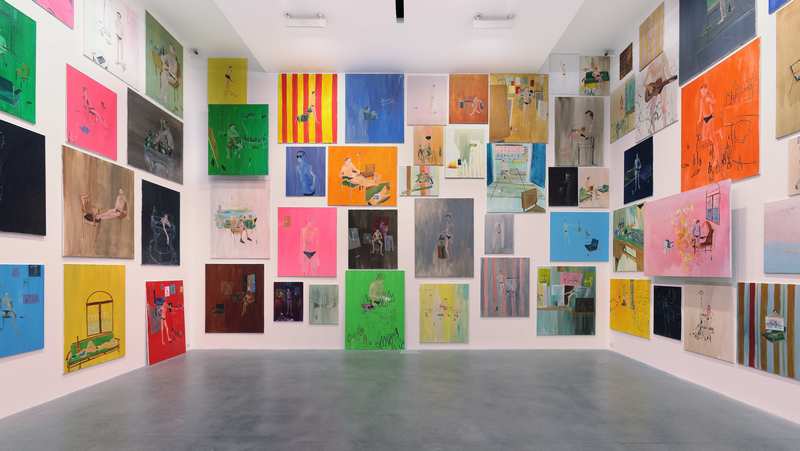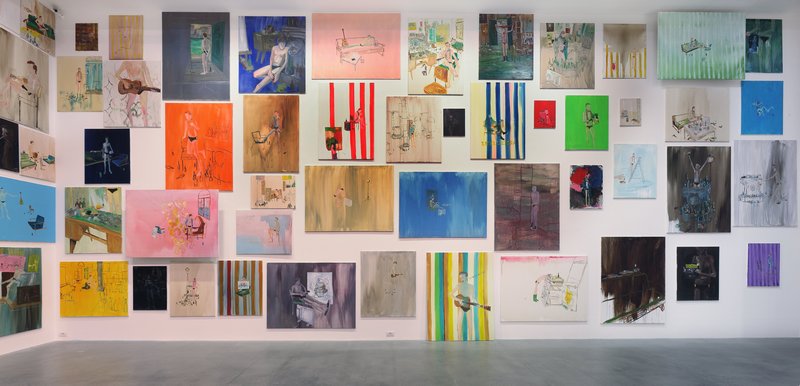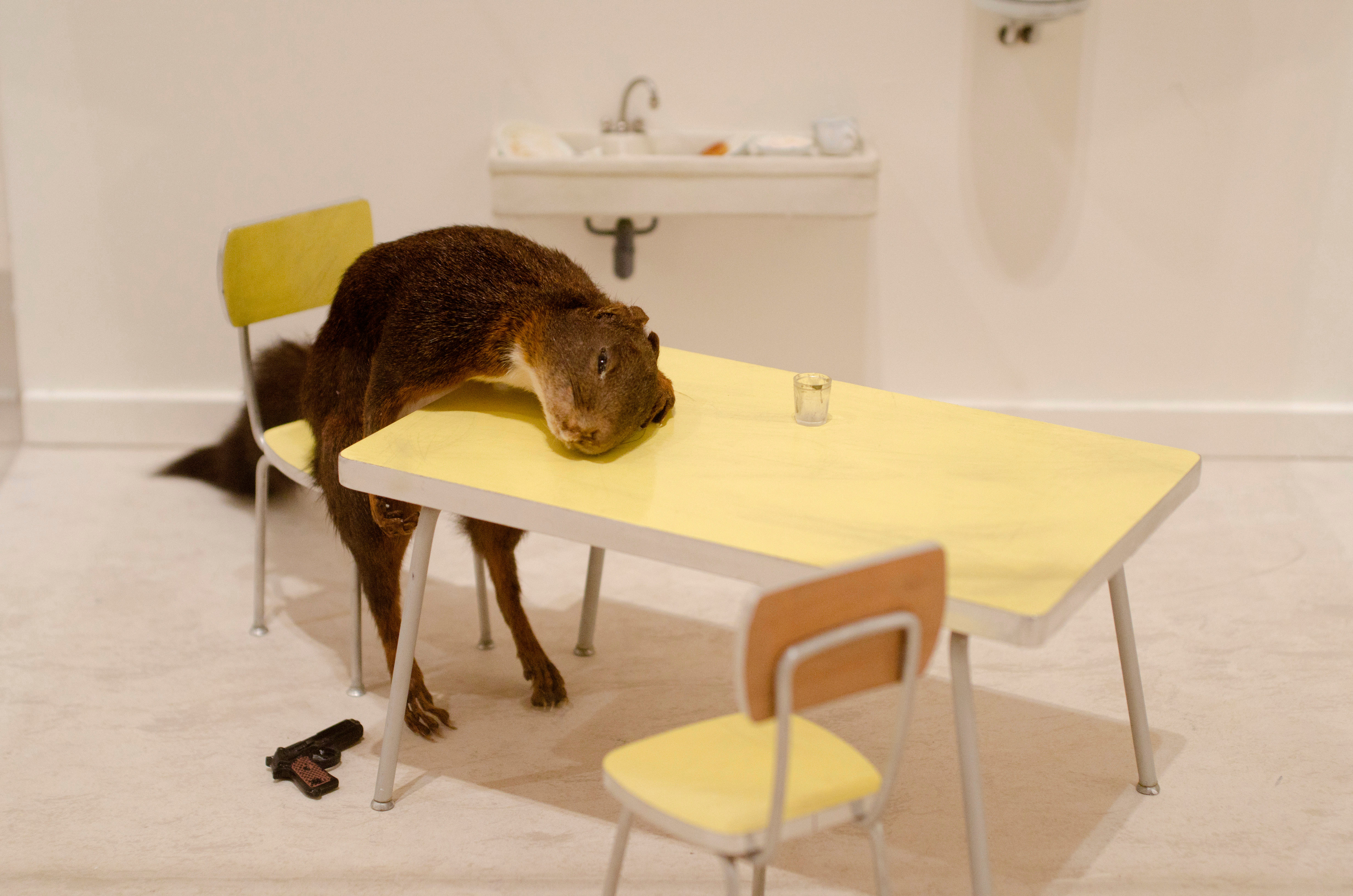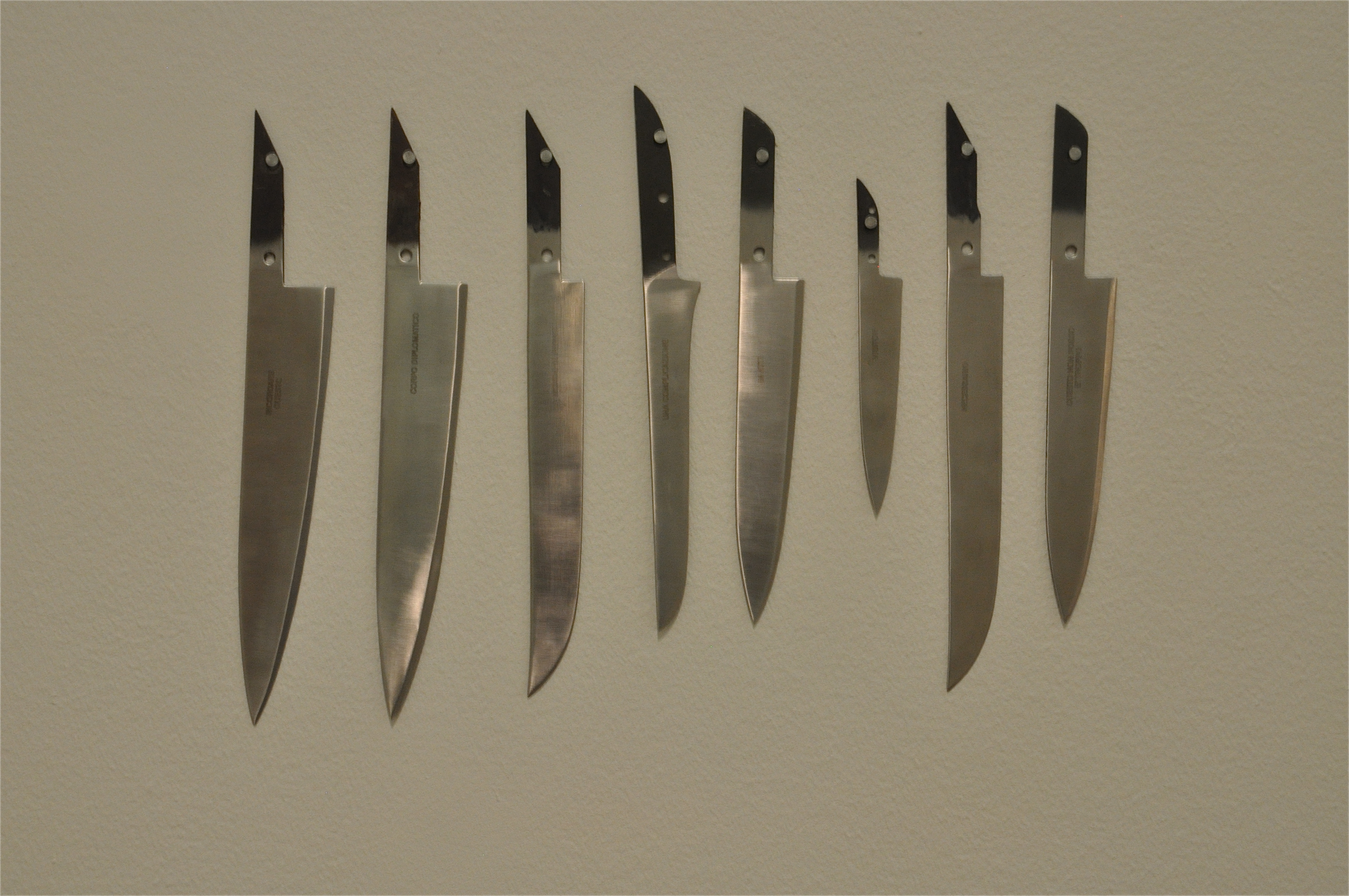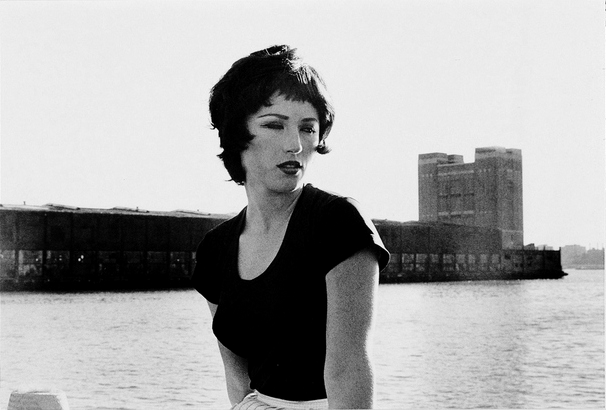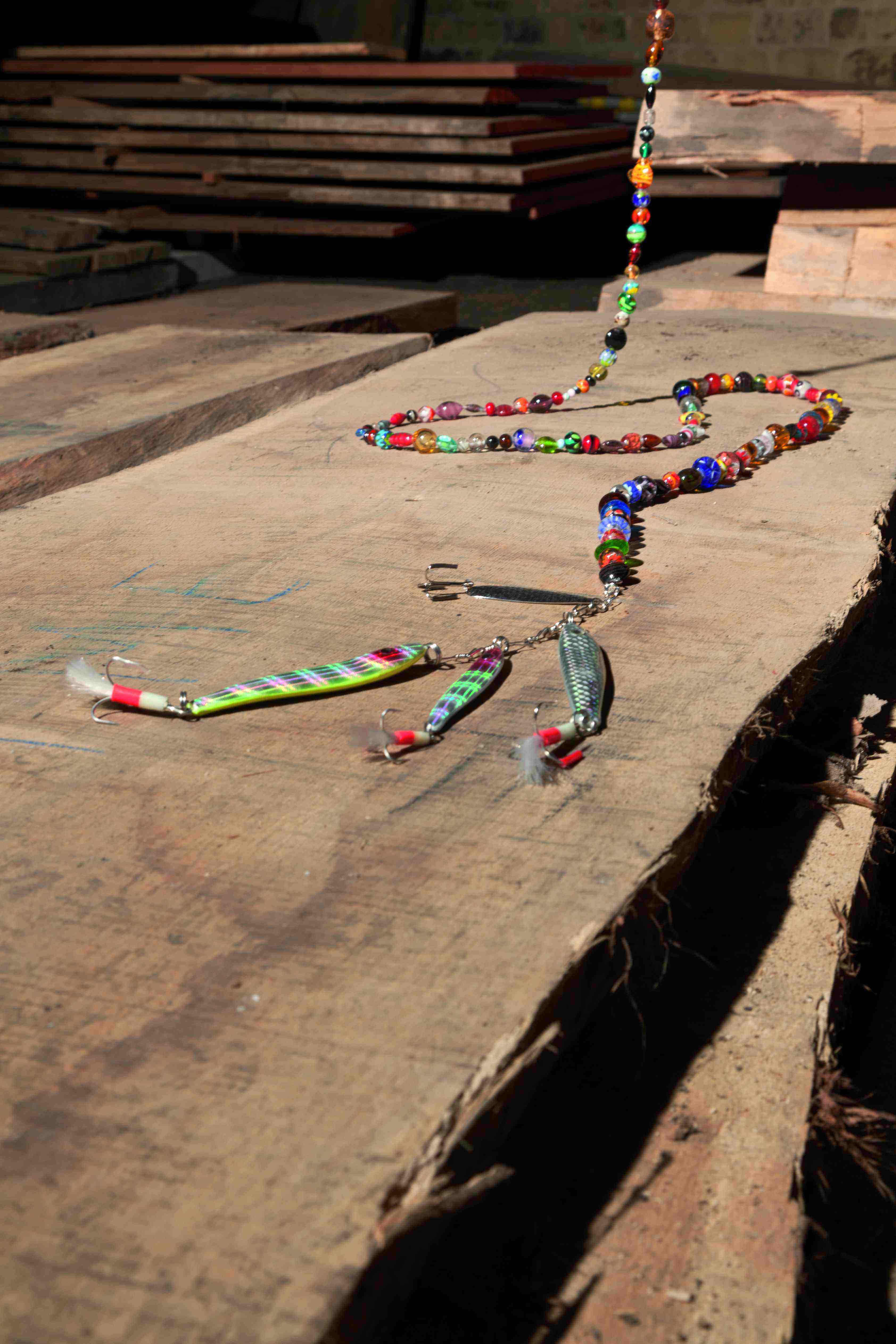Kjartansson’s work is based on a unique blend of visual art, music and theatre. Drawing on inspirations and influences ranging from traditional Icelandic legends to opera music to contemporary pop culture, his performances tend to be built around the endless repetition of a single formula, whether it is a gesture, a word, an aria or a pictorial image. This device leads to pieces in which duration and resistance play a fundamental role, which is in keeping with the classic tradition of performance and body art, but there is also an allusion to the exhausting practice of rehearsals, which Kjartansson is well familiar with – having grown up in a family of actors. A fascination with theatricality, staging and acting are a hallmark of his work, with the artist always starring in roles ranging from knight to rock star and from revolutionary to the incarnation of death. What all these characters have in common is the quality of a romantic hero, both melancholy and impassioned, caught up in a whirlwind of yearning. Kjartansson portrays such figures with a combination of engagement and detachment, drama and irony – an ambivalent attitude that also characterises the reactions of the public to his works.
The End – Venice (2009), presented this year in the occasion of Artissima, grew out of one of his most ambitions projects, conceived for the 2009 Venice Biennale, in which the artist represented Iceland. At a time in which his country was at the centre of an unprecedented economic and financial meltdown, the artist created a decadent, hopeless character who chooses Venice as the perfect city for savouring fully his own sweet downfall. For the entire duration of the biennale – six long months – Kjartansson inhabited the role of this bohemian painter, who in his studio on the Canal Grande, on the ground floor of the fourteenth-century Palazzo Michiel dal Brusà, spent his time painting the portrait of the same young model, day after day. The latter, played by his friend and fellow artist Páll Haukur Björnsson, wandered languidly around the space dressed in only a pair of Speedo trunks (and a blue robe during breaks), smoking cigarettes, drinking beer, listening to music and posing for the artist. For visitors, the scene offered a surreal experience in which it was hard to tell reality from representation. Kjartansson and Björnsson did what you expect two artist friends to do – drink, smoke, chat and make art – but the situation was presented so as to emphasise its nature as a cliché: an ironic mise en scène. Day after day, the paintings that he made piled up in the space along with the cigarette butts and empty bottles, in a process that the artist also saw as functioning in relation to the changing characteristics of the public. While at first the piece must have been perceived as a sort of idle joke for insiders – namely the art professionals swarming around on opening day – over time it became a true space of creation and the result of a serious undertaking presented to the gaze of ordinary visitors. The 144 paintings that make up The End – Venezia are a physical trace and artistic documentation of this experience. The installation looks like an old-fashioned picture gallery, its walls plastered with paintings from floor to ceiling. This emphasises the aspect of maniacal accumulation and obsessive repetition of the same subject, although the formal choices are quite varied, ranging from detailed realism to almost abstract sketches, by way of many citations of well-known styles.
